Derek Jones, Editor of Furniture & Cabinetmaking Magazine (UK)
I’ve been trying to break into the magazine industry for several years with little luck. The CNC magazines tend to focus on industrial while the woodworking on the traditional without much in-between. The CNC guys love to show-off their overly-built and complicated machines filled with jargon that honestly, isn’t needed at all while the traditional guys have no problem using bandsaws and power tools but when it comes to XYZ machines – nope, that’s not woodworking, that’s robots doing all the work for you! Last time I checked, CNCs only cut pieces, real humans have to put it together, glue, clamp, stain etc.. which is where the real hard work and mastery comes from anyhow.
As such, I’m very happy that Derek agreed to be interviewed on a CNC blog – he has produced amazing work with his non-CNC tools – and like him, I don’t see CNCs as either a good or bad thing, just another tool for an artist to use to create their masterpieces.
 He is also a freelance project manager with extensive hands-on experience in the woodworking field and is an accomplished designer and draughtsman of bespoke furniture and specialist joinery using Autocad and Vectorworks. Oh yeah, he’s also the Editor of Furniture & Cabinetmaking Magazine which you can visit at WoodworkersInstitute.com or you can visit his personal site at DerekJones3d.co.uk.
He is also a freelance project manager with extensive hands-on experience in the woodworking field and is an accomplished designer and draughtsman of bespoke furniture and specialist joinery using Autocad and Vectorworks. Oh yeah, he’s also the Editor of Furniture & Cabinetmaking Magazine which you can visit at WoodworkersInstitute.com or you can visit his personal site at DerekJones3d.co.uk.
You have over 30 years of cabinetry experience and are the editor of Furniture and Cabinetmaking… where does this passion for designing and woodworking come from?
At the age of 6 or 7 we moved into the first of many homes that were in need of renovation so tools and offcuts were always around. At that age it was incomprehensible that my father and grandfather could make the furniture we needed with the tools they had, virtually from scratch.
One particular house came with a complete tool chest full of moulding planes and other mysterious contraptions. We were only a few miles from the historic Chatham dockyard where HMS Victory was built so there was a fine tradition of timber based construction and associated crafts. The link between basic hand tool skills and feats of monumental proportion have always fascinated me.
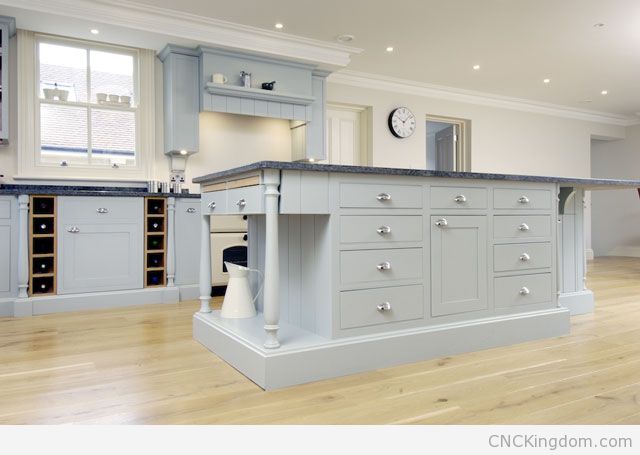
Copyright Derek Jones
How much has production and trends changed over this period of time in the cabinetry world?
I started my first job in a workshop in the eighties and electric routers and biscuit jointers were almost unheard of. There was still a healthy trade in what was termed ‘brown furniture’ mainly for export. Living in Brighton there was also a vibrant trade in antiques mostly destined for the US. As a consequence there were dozens of small workshops specialising in particular aspects of cabinet making such as hand veneering, French polishing, carving, leather inserts for writing desks, Japanese lacquering and upholstery.
The output was phenomenal given the lack of machinery. Even then it was quite normal to break up pieces of Victorian furniture for use on pieces that were from a more desirable period; a sort of reverse up-cycling. Today there is a definite move towards the values associated with handmade goods. Furniture has it’s place in this revival but has had to embrace modern production methods. In the right hands this technology has all the hallmarks of some of the most desirable pieces ever conceived.
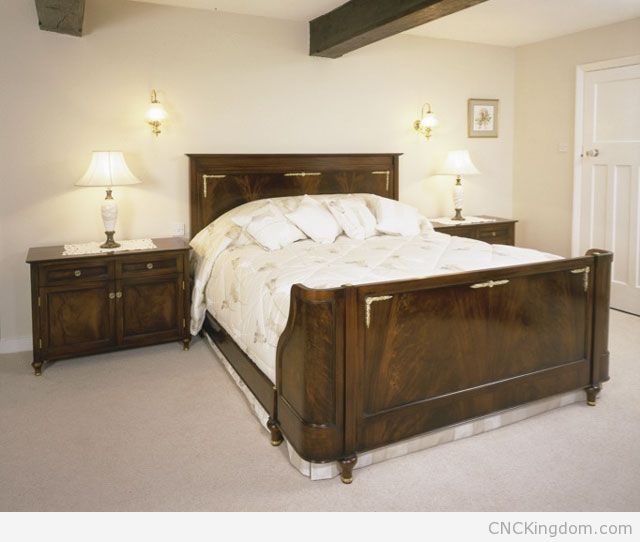
Copyright Derek Jones
You also wrote a book last year about French polishing, finishing and restoring techniques, why did it take you so long to write your first book and how has the entire experience been? Any plans on publishing more books about cabinetry?
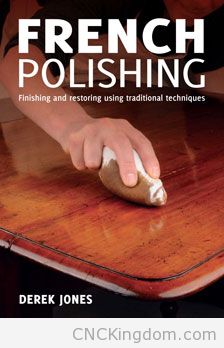 French polishing (shellac) was something I learned the traditional way by working alongside masters of the trade. It’s one of those skills that is surrounded in mystery but really is incredibly easy to do. The book was my attempt to blow the cobwebs away from this underrated and frequently misunderstood finish. Oils have become the finish of choice for a lot of artisan makers but shellac has many great advantages. Up until a few years ago I’d struggle to write anything longer than a postcard but a good publisher will recognise a good story and if they’re really good they’ll find a market for it.
French polishing (shellac) was something I learned the traditional way by working alongside masters of the trade. It’s one of those skills that is surrounded in mystery but really is incredibly easy to do. The book was my attempt to blow the cobwebs away from this underrated and frequently misunderstood finish. Oils have become the finish of choice for a lot of artisan makers but shellac has many great advantages. Up until a few years ago I’d struggle to write anything longer than a postcard but a good publisher will recognise a good story and if they’re really good they’ll find a market for it.
I guess I’m constantly gathering information for the next project. I’ll know it when I see it but in the meantime there’s the New English Workshop. Please visit NewEnglishWorkshop.co.uk for more information.
What are some common problems that people make when polishing and restoring antique furniture and cabinets and what are the solutions?
The most common problem with restoring period furniture is a tendency to overlook the value of the item in its current state and attempt to make it appear like new. Conservation should always be the first priority. With this resolved you can then decide the best course of action. Conservation and restoration are two very different processes.
Although I come from the CNC world where I taught myself how to design and build using their precision – I can totally appreciate the incredible amount of work that using your hands to build a piece. What are some of the more notable pieces you’ve built and do you use any CAD programs to help your designs come to life or do you build everything by using physical drawings?
I’m a little embarrassed to admit to not having mastered SketchUp yet although I’ve been a serious offender when it comes to other CAD packages; Vectorworks and AutoCad, both of which have been used to facilitate automated processes.Speaker cabinets and stair components mainly.
For me the advantages of CAD software in production don’t start to pay off unless there are multiple components. As a tool for visualisation it takes some of the headache out of re-draws.
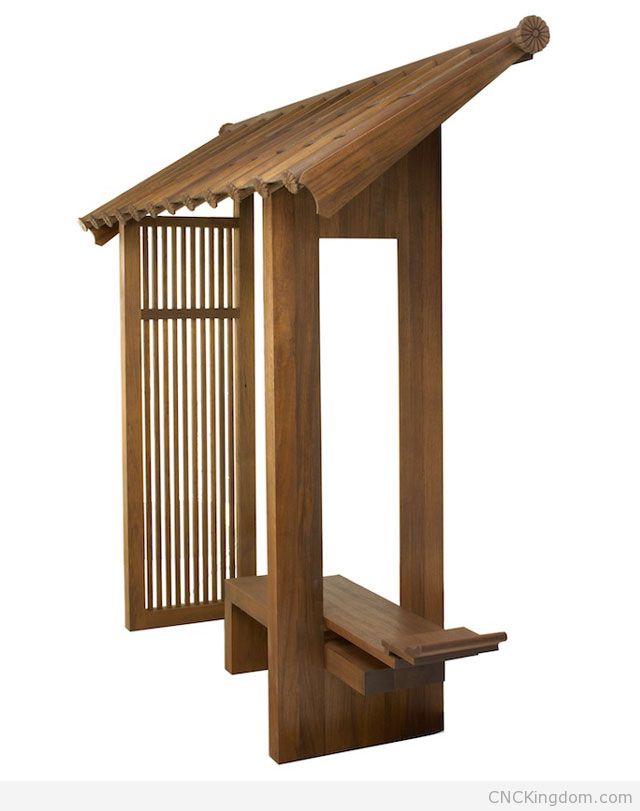
Copyright Derek Jones
What are your views on the ever growing flexibility of parametric cabinetry software and related mass-production methods? Have they put additional financial and time pressure on those who don’t use automation? How has this affected overall craftsmanship in the industry?
There is a level of automation in every process available at nearly every price point in the market whether it be a simple arbour tilt on a spindle or a fully fledged carcassing machine. The issue that would concern me the most is the upfront investment in technology, training and future expansion of a customised system.
It’s possible now for technology to imitate better than ever the work of hand tools, which is slowly beginning to rekindle our relationship with the details associated with hand made goods.
Many luxury brands are synonymous with hand crafted methods and a greater awareness can only broaden the appeal.
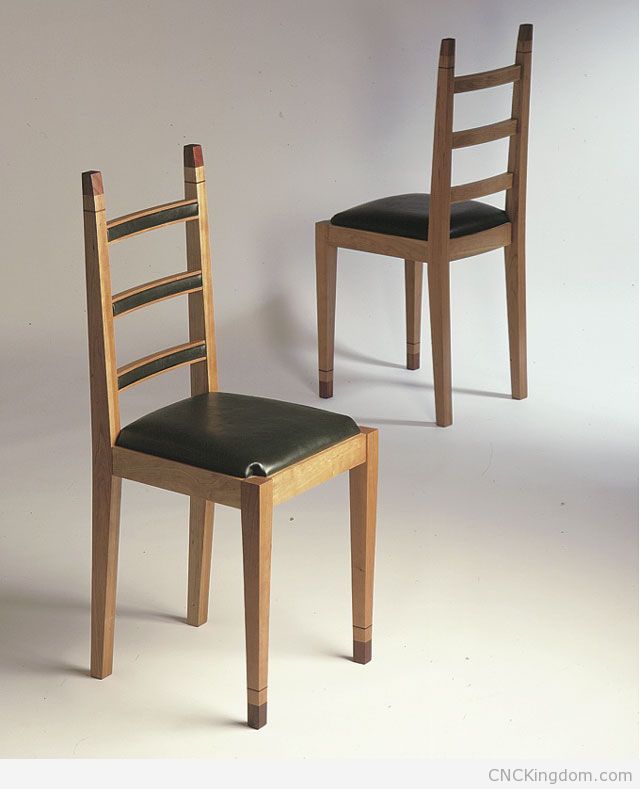
Copyright Derek Jones
One question I’ve asked a number of woodcrafters is why there is such a chasm between those who use traditional building methods and those user power tools or even CNC equipment. It’s like there are two camps that just don’t talk to one another in the industry. You have the purests at one side who insist that using CNC isn’t real woodcraft while those like me, insist it’s just as much work as CNCs don’t build projects, only cut pieces out. What are your views?
Ten years ago if I wanted to outsource to a CNC workshop I’d have the choice of about four within half a days drive from my studio. Now, there are a couple within walking distance (plus 3D Printers) and they’re in the hands of woodcrafters who are using them to create elaborate one-offs.
Maybe some of the things they’re making could be produced by hand but would they have thought of them if the technology hadn’t triggered the concept in the first place? There’s a definite relationship here and it’s beginning to bridge the gap between hand tool users and machinists.
Hand tool use is experiencing something of a renaissance of late. I don’t think it has anything to do with the style of products one can achieve more a desire to reconnect with skills that we fear might get lost in the process. Spending time to create something in a ‘real time’ that we can appreciate is extremely good for the soul. More people should try it.
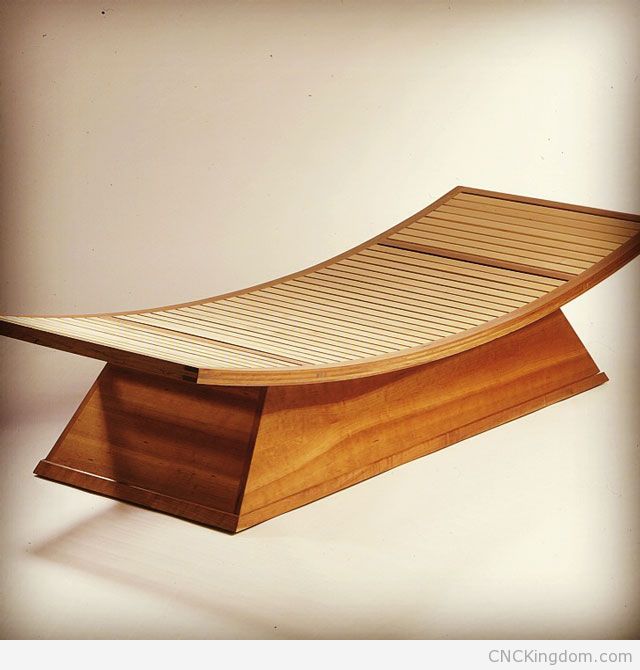
Copyright Derek Jones
Be sure to visit WoodworkersInstitute.com or DerekJones3d.co.uk, there is a lot of greatly inspirational work on both sites!
